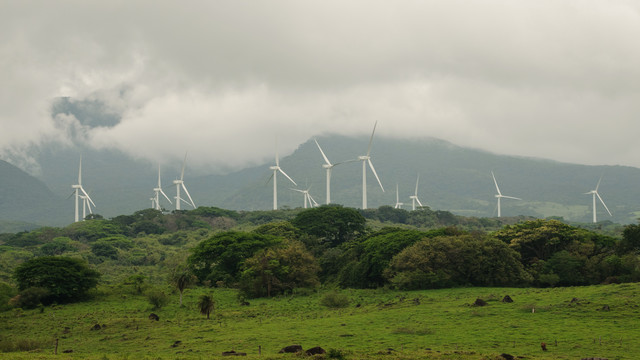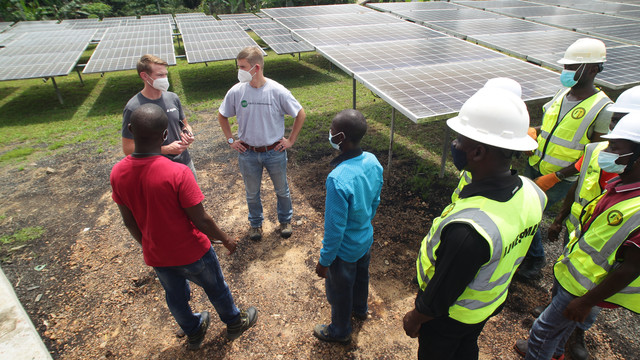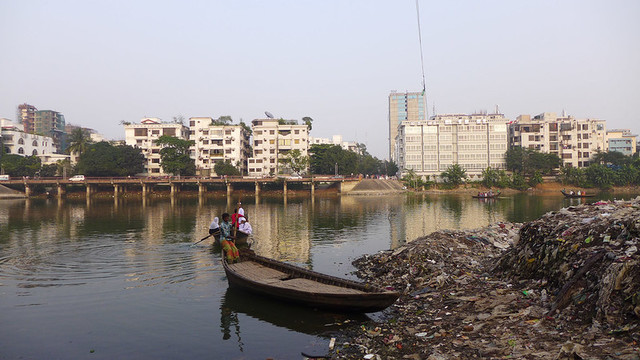Untangling the net: what does 'leave no one behind' mean for fishers?
What does the Sustainable Development Goals' exhortation to 'leave no one behind' mean for a small-scale fishing community in Bangladesh?


A wholesale fish market in Cox's Bazar on the Bay of Bengal. Fishing communities need access to finance and infrastructure such as clean water, refrigeration and transport (Photo: Aftab Uzzaman, Creative Commons via Flickr)
The ambition of the 17 Sustainable Development Goals (SDGs) and their 169 targets, according to the introductory text, is to 'leave no one behind'. This links back to the Millennium Development Goals and the aim to 'get to zero poverty' while also reducing stress on the environment. But what does it mean in practice?
How can we translate this from aspiration into reality? And what will it take for 'leave no one behind' to be embedded in institutions and processes at every level, from local to global?
I believe these are critical questions that need to be answered. Otherwise, there is a real danger that the concept will end up being, and I say this with all seriousness, yet another development bumper sticker.
As reductionist as this may sound, perhaps the best way to understand the multidimensional nature of 'leave no one behind' is by looking at a specific sector. I will aim to explain this by focusing on the small-scale fishery sector in a developing country – specifically using the case of a fishing community in the Lower Meghna Basin in Bangladesh where I spent a great deal of time trying to understand the complexity.
Look beyond fishermen
Traditionally, fisheries are associated with fishermen, but if we look at the whole fisheries value chain, we see that women play a vital role in processing and marketing. For example, in Lake Victoria fisheries, women account for up to 87 per cent (PDF) of fish-workers along the value chain.
Recognising the roles women play in the sector is important to ensure relevant policies are designed to deliver on SDGs and ensure all sections of the fisher communities benefit from employment and income opportunities. Failure to recognise the role of women often (if not always) leads to marginalisation, made worse as investments will not be targeted at the barriers women face.
The same applies to how benefits are shared more widely across society. I have long argued that ensuring that the most vulnerable in society benefit from any policy intervention is crucial for building both national and international legitimacy and for delivering on social and conservation objectives. So our policy interventions should not only target fishermen, but also women and others who have a stake in the sector.
Identify bottlenecks in the system
Again, looking at the whole fisheries supply chain – from fishers and middlemen to retailers and consumers – it becomes clear that the sector is as complex as a tangled fishing net.
Fishers rely on various service providers to sustain their business: craftsmen who repair boats, women who produce and repair fishing nets, ice factories, storage facilities and money lenders for example. A problem with any of these can create a major problem for fishers.
For example, if the craftsmen cannot find tools to repair a boat, or an ice factory does not have reliable source of energy to sustain supply, fishing activities are affected – potentially reducing profitability, threatening employment opportunities and local food security.
So, in order to enhance the profitability of fisher communities (which I see as one way of assessing whether no one is left behind) and to make our policy interventions inclusive, problems in the supply chain face need to be identified and tackled.
Invest in market infrastructure
For most artisanal fisheries in many developing countries, supplying fresh fish fetches more income than dried or cured fish. But supplying large quantities of fresh fish requires infrastructure. Fishers need access to insulated storage facilities, ice and refrigeration, transport links to bigger markets, clean water, and so on.
Onshore fish handling in small-scale fisheries often relies on archaic and time-consuming methods, such as scooping fish out of the boats with buckets. In high temperatures, the quality of fish delivered to the market deteriorates quickly, increasing waste. It is estimated that post-harvest losses in small-scale fisheries in developing countries can be between 20 and 25 per cent (PDF).
Given the lack of market access and appropriate infrastructure, opportunities for increasing revenue are limited. Investment either through private sector engagement or public-private-partnerships is critical.
Reform financial products and services
Small-scale fishers often also struggle to obtain microcredit. This is mainly because fishers tend to lack collateral and because conventional financial products are not necessarily suitable for fishers. They do not offer any flexibility in terms of repayment schedule, despite the seasonal variations fishers face in their fish catch.
This forces many fishers to rely on informal and often extortionist local money lenders – significantly reducing their profit margin.
Giving poor communities greater access to better financial products and services can increase the rate at which they move out of poverty. Sustainable financial mechanisms are an important step towards inclusive growth, and can support the process of achieving sustainable economic growth and development by opening up opportunities for marginal groups.
Allowing more people to benefit from suitable financial mechanisms means bringing more resources into the economy – in the form of money and participation in production. It also means improving poor people's well-being and resilience to economic and climatic shocks.
Easier said than done?
As we can see, even taking a simplified approach to 'leave no one behind' can be complicated. In our research, we want to identify constraints along the hilsa fish supply chain and assess how local power structures enable or disable inclusion.
Looking at this local 'power structure', which involves multiple stakeholders with economic and conservation or management objectives, is key in understanding how benefits are shared and why some lose out.
Based on our findings, we will make concrete policy recommendations designed to enhance profitability for all actors in the sector. Watch this space!
Essam Yassin Mohammed (eymohammed@iied.org) is a senior researcher in IIED's Shaping Sustainable Markets research group.
Further resources:
- Mohammed has recently authored an IIED background report entitled 'Leaving no one behind by 2030'
- 'Leave no one behind' is the theme of the High-level Political Forum on Sustainable Development (HLPF), the main United Nations platform for following up on the 2015 SDGs. IIED is involved in three side events at the forum, which takes place in New York from 11-20 July 2016




